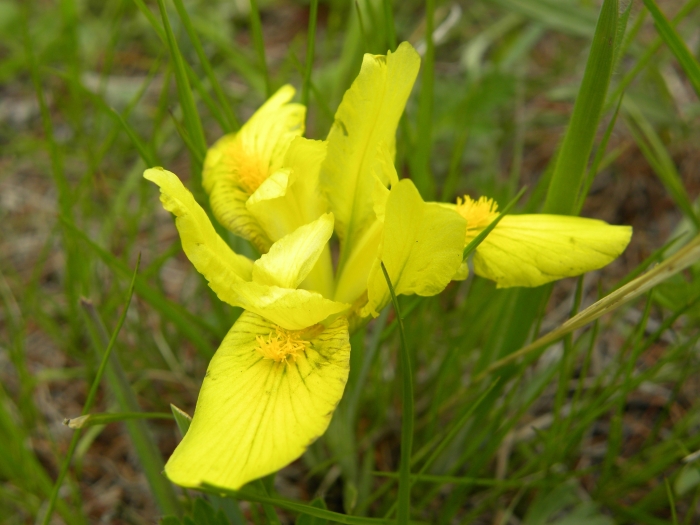Low Iris
(Iris humilis)
Low Iris (Iris humilis)
/
/

© Donald Hampton
CC BY-SA 4.0
Image By:
© Donald Hampton
Recorded By:
Copyright:
CC BY-SA 4.0
Copyright Notice:
Photo by: © Donald Hampton | License Type: CC BY-SA 4.0 | License URL: http://creativecommons.org/licenses/by-sa/4.0/ | Uploader: akdhampton | Publisher: iNaturalist |

























Estimated Native Range
Summary
Iris humilis, commonly known as the Low Iris, is a rhizomatous perennial herb that is part of the Psammiris section. It is native to a range of habitats including steppes, meadows, and forest edges in Eastern Europe, Russia, and Central Asia, often found at altitudes between 656 and 4921 feet (200-1500 meters). This species typically forms clumps of sword-shaped leaves and produces short stems that bear yellow flowers with distinctive orange beards, blooming in the spring. The flowers are moderately showy and are appreciated for their bright coloration.
The Low Iris is valued for its drought tolerance and ability to thrive in poor, well-drained soils, making it suitable for rock gardens, border fronts, and wildflower meadows. It is hardy to USDA Zone 1-6, indicating a wide range of cold hardiness. In cultivation, it requires minimal maintenance once established, but it does prefer a position in full sun to partial shade and well-drained, calcareous sandy or stony soils. While not commonly available in the nursery trade, it can be a unique addition to a garden due to its resilience and attractive blooms. Potential problems include susceptibility to iris borer and root rot in overly wet conditions.CC BY-SA 4.0
The Low Iris is valued for its drought tolerance and ability to thrive in poor, well-drained soils, making it suitable for rock gardens, border fronts, and wildflower meadows. It is hardy to USDA Zone 1-6, indicating a wide range of cold hardiness. In cultivation, it requires minimal maintenance once established, but it does prefer a position in full sun to partial shade and well-drained, calcareous sandy or stony soils. While not commonly available in the nursery trade, it can be a unique addition to a garden due to its resilience and attractive blooms. Potential problems include susceptibility to iris borer and root rot in overly wet conditions.CC BY-SA 4.0
Plant Description
- Plant Type: Herb
- Height: 0.5-1.5 feet
- Width: 0.5-1 feet
- Growth Rate: Moderate
- Flower Color: Yellow
- Flowering Season: Spring
- Leaf Retention: Deciduous
Growth Requirements
- Sun: Full Sun
- Water: Medium
- Drainage: Fast
Common Uses
Border Plant, Low Maintenance, Rock Garden
Natural Habitat
Native to steppes, meadows, and forest edges in Eastern Europe, Russia, and Central Asia
Other Names
Common Names: Hungarian Iris
Scientific Names: , Iris humilis, Iris dahurica, Iris dahurica, Iris flavissima, Iris flavissima subsp. transuralensis, Iris humilis f. foliata, Joniris humilis,
GBIF Accepted Name: